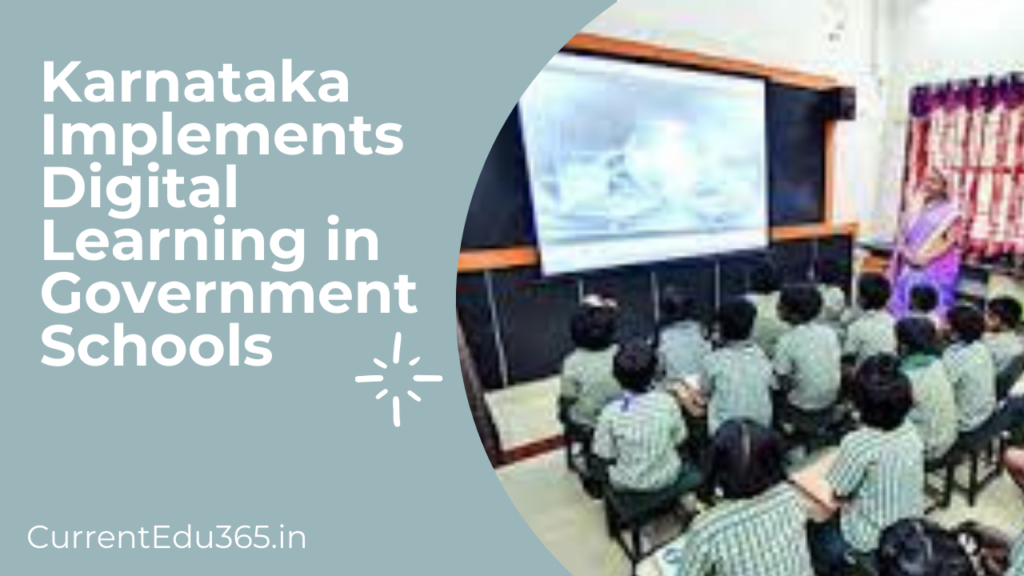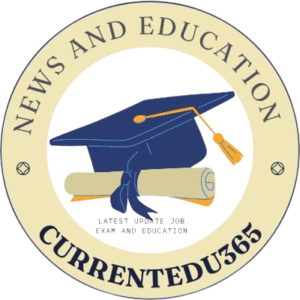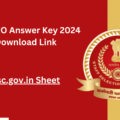Recently, the state government of Karnataka has come up with an ambitious digital learning initiative aimed at bringing changes in the educational scenario of government schools. This new move will help bridge the gap in digital exposure, enhance the quality of learning, and create students who will be better equipped to face the challenges of the 21st century. In the following detailed article, we look at the salient features of this initiative, its objectives, and what changes it can bring about in Karnataka’s educational system.
Introduction to Karnataka’s Digital Learning Initiative
In a world that is fast getting driven by technology in every single field, embedding digital learning into the system of education takes center stage. A fresh initiative taken up by the government of Karnataka is to introduce digital tools and resources in each and every government school across the state. This will definitely help in enhancing the methodology of teaching, student engagement, and educational outcomes.
Objectives of the Digital Learning Initiative
- Improvement of Quality in Education: Basically, the initiative aims at creating better quality in education provided within government schools. By the incorporation of digital tools and resources into the Program, learning is intended to be made more interactive, engaging, and effective.
- Bridging the Digital Divide: One of the main goals is the bridging of the gap in the digital divide among the students. The initiative wants to make sure that all students, irrespective of their socio-economic backgrounds, have access to digital learning resources and opportunities.
- Prepare Students for the Future: The structure of the program would arm the students with those digital skills and competencies that are necessary in the modern world. The integration of technology into the curriculum would help students to be better prepared for higher education and the workforce.
- Support Teachers: Again, the initiative focuses on supporting teachers with training and resources that will enable them to effectively integrate digital tools into their practice. This helps in enhancing the quality of teaching and learning among students.
- Promote Inclusion: The program strives to promote inclusion by ensuring that all students have access to digital resources and support, fitting their different learning needs and capabilities.

Salient Features of Digital Learning Initiative
- Digital Classrooms: The project includes the establishment of digital classrooms that are equipped with the latest modern technologies in the form of computers, tabs, interactive whiteboards, and projectors. These digital tools will enable interactive learning and facilitate access to complex concepts.
- E-Learning Platforms: Various e-learning platforms and educational software will be made available for government schools. These provide additional resources such as video lectures, simulations, and online assessments that can supplement conventional teaching.
- Online Resources: Several online resources will be available, like digital textbooks, educational videos, and interactive exercises. These resources will allow the students to apply themselves at their very own pace and enhance their learning materials.
- Teacher Training Programs: The program provides cohesive training for teachers in this regard. The teachers will learn to integrate digital aids into their teaching practices and make effective use of the e-learning platforms.
- Internet Connectivity: In this program, internet connectivity in government schools is better assured. Without proper access to the Internet, one cannot use digital resources and hence, engagement with online learning cannot be pursued effectively.
- Technical Support: Regular technical support will be extended to the schools toward problem issues arising from digital tools and resources. This will ensure that technology is integrated into the learning environment.
Strategy of Implementation
- Pilot Program: The program shall start off with a pilot across select government schools. In this way, the effectiveness of these digital tools and resources would be assessed for improvements before scaling up.
- Infrastructure Development: It will involve investment in infrastructure development like installation of hardware, laying internet connectivity, and development of digital content. Infrastructure development is one of the critical components of this initiative.
- Partnership: The state government will create partnerships with technology companies, educational institutions, and NGOs who will be of immense use in the implementation of this programme. This would be an added asset in terms of resources, expertise, and other forms of support.
- Monitoring and Evaluation: The implementation process of the digital learning initiative should be closely monitored and assessed in terms of effectiveness and impact. Suggestions for improvement will be welcome from teachers, students, and any other stakeholder to ensure program success.
- Community Involvement: The initiative shall engage the local community and parents through awareness campaigns and community meetings on how to garner community support for benefits of digital learning.
Potential Impact of the Digital Learning Initiative
- Enhancement of Learning Outcomes: The initiative of integrating digital tools and resources into the curriculum is very likely to improve learning outcomes. With interactive and engaging content, there are likely improvements in understanding and retention of knowledge.
- Increased Student Participation in Active Learning: Digital learning tools can help make education more interactive and fun for students. Interacting with simulations, watching multimedia content, or conducting activities online captures the students’ attention, thus encouraging them in learning.
- Improved Teacher Efficiency: With training and resources provided to teachers, innovations in teaching methods could include an effective integration of technology in the classrooms. This, in turn, can increase their efficiency, whereby more students can be reached with learning.
- Digital Divide Overcoming: The program attempts to provide equal digital opportunities for students regardless of their backgrounds. Overcoming the digital divide will, in a large way, make equal educational and social inclusion opportunities a reality.
- Preparation for the Future: Students with digital skills and competencies are thus better prepared to meet higher education and the demands of the contemporary labor market, while this will be increasingly necessary in a technology-driven world.
Challenges and Solutions
- Infrastructure Limitations: The schools may have infrastructural shortcomings in terms of connectivity of the internet or with outdated equipment. Such limitations will need to be overcome through targeted investment and upgrades.
- Digital Literacy: Ensuring digital literacy for all students and teachers is of prime importance. This would be undertaken comprehensively through training and support.
- Content Relevance: The digital content and resources used in the course should be relevant and help in curriculum enforcement. Quality and relevance of content are to be ensured through periodic updating and reviews.
- Equitable Access: To this end, all students, irrespective of their background, including the marginalized groups, have equal opportunity for access to digital resources. Support and resources shall be provided when possible to schools in less privileged areas.
Conclusion
In the state of Karnataka, starting such a digital learning initiative was quite in order to give a makeover to the education system and improve learning achievements in the government schools. Digital integration of tools and learning resources within the program is conceived to offer students a more interactive and efficient learning environment. Full implementation, training, and support promise the bridge for the divide in digital learning, improved learning achievements, and students prepared to meet a technology-driven future.
For more information about the digital learning initiative and other stories related to education, log on to http://currentedu365.in.




